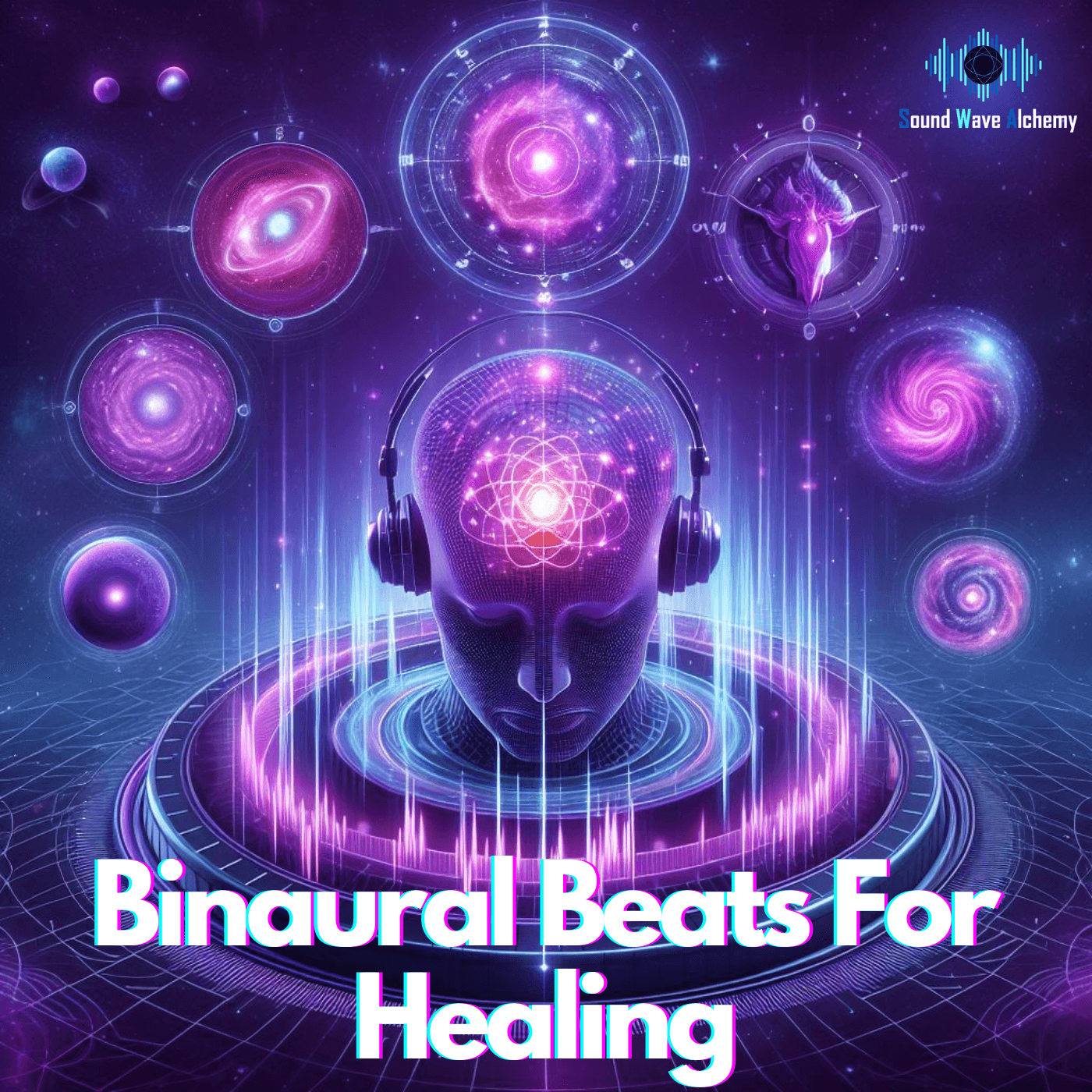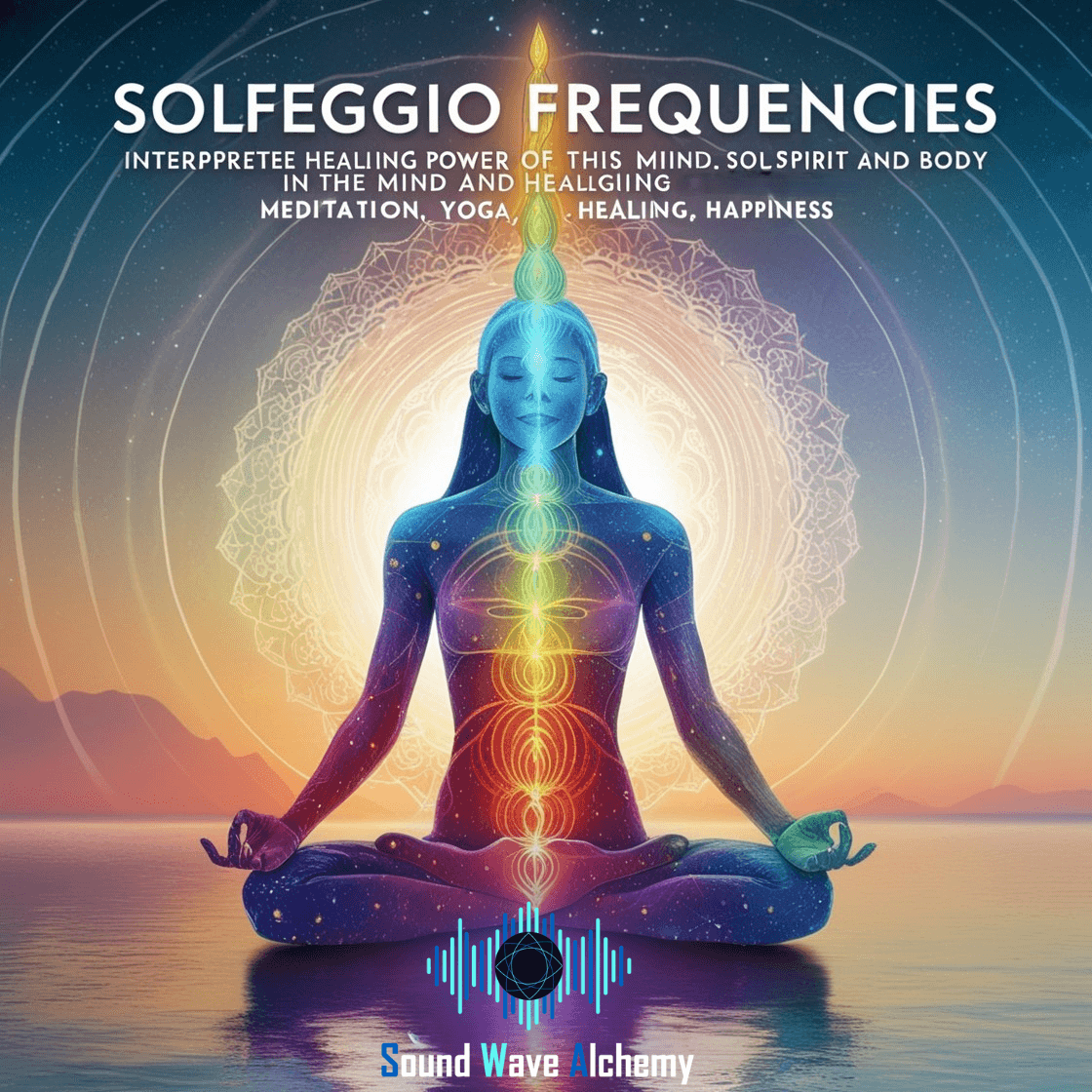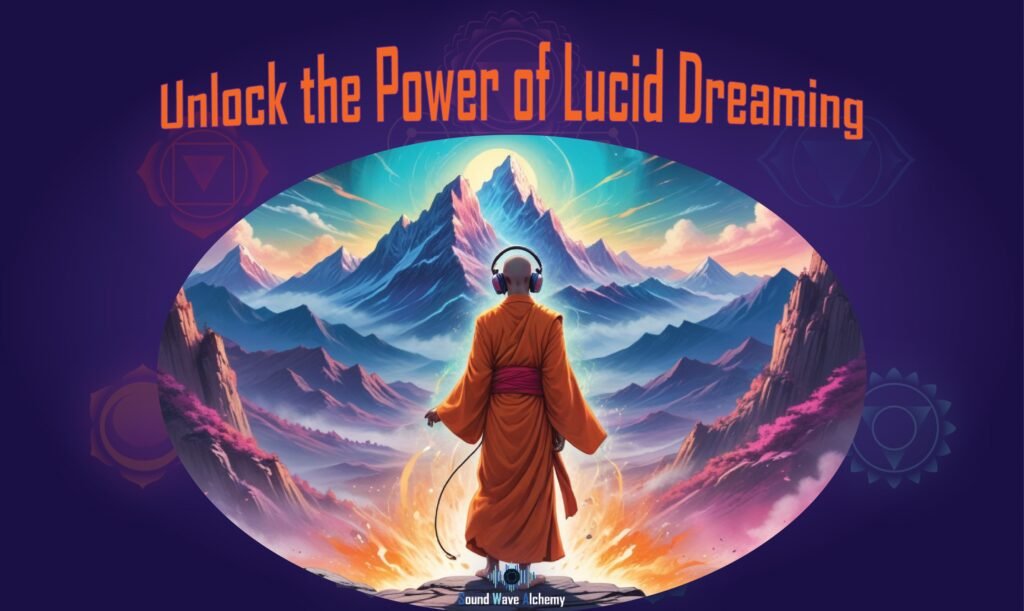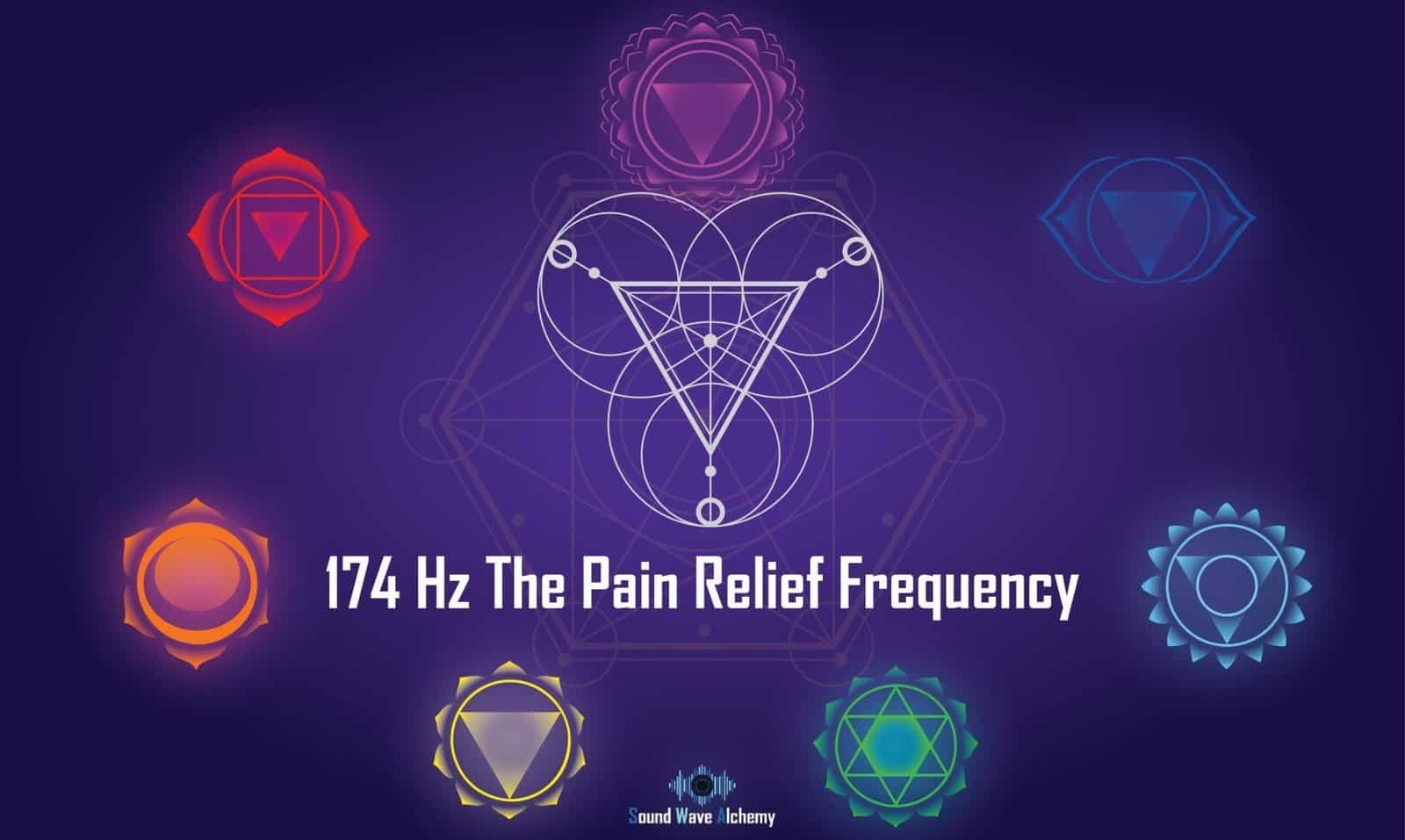Lucid dreaming is an exciting phenomenon that has captured the attention of people for millennia. Modern science and recent studies have taught us more about lucid dreams than ever before. In this article, we will explore what lucid dreaming is, its history, the state of research, what causes lucid dreams, how to have them, the benefits and cautions of lucid dreaming, and answer frequently asked questions about topics like lucid dream herbs, lucid dreaming binaural beats, the best sounds for lucid dreaming, and more.
Lucid dreaming is the ability to be aware of and control one’s dreams while they are happening. This phenomenon has been mentioned in ancient Hindu manuscripts and has been scientifically studied since the 1960s. Lucid dreaming has gained popularity in recent years, thanks in part to movies like Inception, but it is hardly a new concept. In this article, we will delve into the world of lucid dreaming and provide valuable information on how to experience this amazing phenomenon, including tips on lucid dream induction, dream stabilization, and increasing your lucid dream frequency.
Key Takeaways
- Lucid dreaming is the ability to be aware of and control one’s dreams while they are happening.
- Lucid dreaming has been studied scientifically since the 1960s and has been mentioned in ancient Hindu manuscripts.
- In this article, we will explore the history, research, benefits, and cautions of lucid dreaming, as well as answer frequently asked questions about topics like the best binaural beats for lucid dreaming and how to use sounds for lucid dreaming.

Brainwave-tuned audio for deep meditation, alignment, and inner calm.
A perfect tool for high-vibe self-healing.
$249.49 $24.00

Pure pulsing tones to re-center your focus and balance your energy field.
Royalty-free for use in personal or healing work.
$149.99 $36.69
What is Lucid Dreaming?

Lucid dreaming is a state during which the individual becomes aware that he is dreaming while still in it. This awareness is characterized by lucidity within the dream, as opposed to not being aware that you were dreaming until you awoke. The ability to control your dreams is a secondary element that comes after lucidity.
It is important to note that the level of dream control a person can have over their dreams exists on a spectrum. Some people may only apply little dream shifting and alterations to their dreams, but others can make buildings disappears, experience teleportation, and even fly like a super hero does. This spectrum ranges from no influence to total influence. When a person can control their dreams, the experience is akin to virtual reality for their sleeping mind.
Research suggests that lucid dreaming is not as rare as most people might think. Approximately 50% of people claim to have had one or more lucid dreams in their lives, with approximately 23% reporting one or more lucid dreams per month. While most lucid dreams endure around 14 minutes, their substance is as diverse as the people who experience them. The possibilities are unlimited, just like they are in traditional dreams. Lucid dreams can be about anything, from climbing Everest to having brunch with long-deceased historical people.
There are a few common themes that occur in lucid dreams. Many lucid dreams include flying dreams, talking with the dream characters, and having sex and satisfying our own sexual fantasies. However, it is important to note that some people confuse a hyper-vivid dream with a lucid dream. Just because someone says they have had a lucid dream does not necessarily mean that they have truly had one.
Lucid dreaming is not a recent phenomenon. It has been around for a long time and has been documented in various cultures throughout history. It is a fascinating experience that has captured the interest of many people, who are drawn to its potential benefits like enhanced creativity, strategizing, and overcoming nightmares.
The History of Lucid Dreaming
Lucid dreaming has been practiced for thousands of years, with Tibetan Bön Buddhists practicing “dream yoga” and the ancient Greek philosopher Aristotle describing lucid dreams in his work “On Dreams” around 330 B.C. However, it wasn’t until 1913 that the term “lucid dream” was coined by Frederik van Eeden in an article titled “A Study of Dreams.”
Celia Green began methodically examining lucid dreaming in 1968, and she identified it as a distinct sleep state related with rapid eye movement (REM). However, in the 1970s and 1980s, Dr. Stephen LaBerge popularized lucid dream study. LaBerge used electrooculogram (EOG) technology to detect eye movements, which enabled dreamers to signal lucidity to the outside world.
Since then, studies have explored various aspects of lucid dreaming, including methods for inducing lucid dreams, uncovering what happens in the brain during this phenomena, and their potential for mitigating nightmares and other therapeutic uses. Denholm Aspy, Ph.D., a visiting scholar at the University of Adelaide in Australia, carried out two of the largest studies on learning to lucid dream. Aspy discovered that a mixture of induction strategies designed to elicit lucid dreams worked for all of his volunteers, regardless of whether they had previously experienced lucid dreaming.
Overall, the history of lucid dreaming shows that it has been a subject of interest for centuries, and modern research has helped us better understand this unique sleep state and its potential benefits, from enhancing creativity and mental stimulation to providing a form of escapism and adventurous dreams.
The State of Lucid Dreaming Research

We have made significant progress in lucid dreaming research in recent years. However, the elusive nature of lucid dreams makes them a challenging subject to study. Unlike in the movie Inception, where a metal briefcase with juice can induce lucid dreaming, there is no guaranteed method for inducing this state. Researchers are actively trying to develop an easy induction technique, but there is still a long way to go.
One of the biggest challenges in lucid dream research is the small sample size. Studies often only get four or five people successfully lucid in the lab, which is not enough to draw reliable conclusions. To address this, researchers are trying to figure out different ways to induce this control dream state in larger groups of people. One promising approach is to use an external cue system, such as having dreamers move their eyes in a certain way once they reach lucidity, like a sort of Morse code. Another area of research involves studying the lucid dreaming brain waves and frequencies that are associated with this unique state of consciousness.
Despite these challenges, research has revealed reliable information on how lucid dreaming works in the human brain. For example, studies have shown that lucid dreaming is associated with increased activity in the prefrontal cortex, the part of the brain responsible for decision-making, self-awareness, and working memory. This suggests that lucid dreaming may have potential applications in fields such as cognitive psychology and neuroscience.
In conclusion, while there are still many challenges to overcome in lucid dreaming research, we have made significant progress in understanding how it works in the human brain. With continued research and development, we may be able to unlock the full potential of lucid dreaming in the future, including harnessing its benefits for creativity, memory consolidation, and even addiction treatment through mental simulation and visualization techniques.
What Causes Lucid Dreams?
Lucid dreams occur due to the activity in the prefrontal cortex of the brain. This part of the brain is responsible for self-awareness and reflection. The distinction between your conscious, awake self and your unconscious, sleeping self becomes clearer during lucid dreams.
When we are asleep but not lucid dreaming, the prefrontal cortex, which is our conscious human thought machine, is essentially offline. However, during lucid dreaming, there is some prefrontal cortex ability that is more active than when we are not lucid dreaming. It is not at the same level as when we are awake, but it is doing something. It is an active but not fully active state.
Lucid dreaming frequently takes place during the REM period of sleep, which begins approximately an hour after we fall asleep. This is when most dreaming happens. Recently, researchers have been trying to determine whether lucid dreaming is a unique state and not entirely like “normal” REM sleep. They have found that certain lucid dreaming brain waves and frequencies are associated with this state.
The brain shows signs of more activation during lucid dreams than it does during typical REM sleep. Therefore, it is likely a slightly different REM state. However, if we have to call it REM or non-REM, it is definitely REM. Understanding the brain activity and subconscious mind processes involved in lucid dreaming is an active area of research, with potential implications for fields like hypnosis, meditation, and even psychedelic experiences.

🔁 Isochronic Tones for Energy
Pure pulsing tones to re-center your focus and balance your energy field.
Royalty-free for use in personal or healing work.
$149.99 $36.69
How to Lucid Dream
Lucid dreaming is an exciting and fascinating experience that can be achieved through various techniques. Here are some reliable methods that can help you get started or increase your lucid dream frequency if you’ve already been having them spontaneously:
- Reality checks: This technique involves asking yourself several times a day if you are dreaming. This helps to train your brain to recognize when you are in a dream state, which can increase the likelihood of having a lucid dream.
- Mnemonic Induction of Lucid Dreams (MILD): This technique involves setting an intention for what you want to dream about that night. Before going to bed, focus on the intention and repeat it to yourself. This can enhance your chances of having a lucid dream.
- Wake Back to Bed (WBTB): This technique involves waking up in the middle of the night or in the morning and then going back to bed with the intention of having a lucid dream. This technique can be combined with other methods, such as reality checks or MILD.
- Dream journaling: Keeping a dream journal can help you become more familiar with the features of your dreams, which can make it easier to recognize when you are in a dream state. Write down your dreams as soon as you wake up, and try to include as much detail as possible, including any dream signs you notice.
It’s important to note that while drugs and supplements like galantamine have been shown to induce lucid dreams, it’s not recommended to use them. We don’t know the side effects exactly yet, and there are other methods that work better, such as using binaural beats for lucid dreaming or other lucid dream sounds.
For more detailed information on how to use binaural beats for lucid dreaming: Read Our Article Here
Remember, with practice and patience, anyone can learn to have lucid dreams and experience their many benefits, from enhancing creativity to providing a form of escapism and adventurous dreams.
The Benefits of Lucid Dreaming

Lucid dreaming has potential benefits that can be achieved through various techniques. One of the most notable benefits is the ability to combat and transform nightmares. By using lucid dream incubation techniques, dreamers can intentionally change a nightmare by altering the dream content. For instance, a person who has nightmares about a witch can tell themselves to dream about the witch turning into a good witch or to say to them why she’s there in the dream. This approach allows individuals to take control of their dreams and reduce the impact of nightmares on their sleep quality.
Lucid dreaming can also hold benefits for those suffering from posttraumatic stress disorder (PTSD) who experience nightmares as a result. While there is no proof that lucid dreaming actually treats PTSD, it has been linked to a decrease in the symptoms of anxiety and despair in PTSD patients, like the healing sound of 852 Hz Frequency in the Solfeggio Frequencies Chart. This implies that lucid dreaming may offer a different approach to treating nightmares in individuals with post-traumatic stress disorder (PTSD), especially for those who also have symptoms of anxiety and despair..
Another potential benefit of lucid dreaming is its implication for managing insomnia without medicine or drugs. By training the brain to become more aware during sleep, individuals can improve their sleep quality and reduce the impact of insomnia on their daily lives. Lucid dreaming may also have benefits for enhancing creativity, problem-solving, and even fulfilling sexual fantasies in a safe and controlled environment.
One of the best benefits of lucid dream is the ability to help, and enhance your manifestation process, and make it appear quicker and in short period of time in ones life, since the lucidity of the dream makes the dream more real and gives you the total control over it, you may consider living the wish fulfilled during this dream state, which results in feeling the reality of the desire already manifested and by living its reality you begin vibrating in resonance with the frequency of what you desire. And since “We Attract What We Are” then you begin attracting that state you altered lived in your lucid dream which is the state of the wish fulfilled.
In summary, lucid dreaming has the potential to hold several benefits for individuals who suffer from nightmares, PTSD, and insomnia. By taking control of their dreams, individuals can improve their sleep quality, reduce anxiety and depression symptoms, and alleviate the impact of these disorders on their daily lives. Lucid dreaming may also offer benefits for manifestation, personal growth, self-integration, and practicing real-world skills through mental simulation and visualization techniques.

🧘♀️ Binaural Beats for Healing
Brainwave-tuned audio for deep meditation, alignment, and inner calm.
A perfect tool for high-vibe self-healing and focus.
$249.49 $24.00
Cautions and considerations for lucid dreaming
Lucid dreaming is a fascinating and exciting experience that many people strive to achieve. However, it is important to note that it is not an easy feat. It requires time, dedication, and practice. Many websites and workshops promise quick and easy ways to achieve that state, but it is best to approach them with skepticism. Most people can learn how to lucid dreams from reliable sources such as YouTube videos, how-to articles, and legitimate workshops.
It is important to note that induction techniques like the wake-back-to-bed method can have potential sleep impacts. Before attempting lucid dreaming, it is crucial to consider whether the practice might be detrimental based on your unique health conditions and family history. For example, those who experience dissociation and schizophrenia may find that the techniques for lucid dreaming might have an effect on the reality-fantasy boundary. It is best to consult with a healthcare professional before attempting lucid dreaming if you have a tendency for certain types of psychopathology, schizophrenia, dissociation, or epilepsy.
Nirit Soffer-Dudek, Ph.D., warns that induction techniques for lucid dreaming might have an effect on the reality-fantasy boundary. Her 2019 report recommends further research to provide definitive answers to such problems.
It is also important to note that the connection between lucid dreaming and the likelihood of sleepwalking and/or doing something dangerous is still unclear. While there are potential side effects that can come from any new drug or technique that plays with your physiology, It is crucial to understand that the cause is related to the induction techniques rather than lucid dreaming in itself.
In conclusion, lucid dreaming is not an easy feat and requires time, dedication, and practice. When attempting lucid dreaming, it is crucial to consider whether the practice might be detrimental based on your unique health conditions and family history. It is best to consult with a healthcare professional before attempting lucid dreaming if you have a tendency for certain types of psychopathology, schizophrenia, dissociation, or epilepsy. It is also vital to note that potential side effects stem from induction procedures rather than lucid dreaming itself.
The Bottom Line on Lucid Dreaming
Lucid dreaming is a unique experience that varies from person to person. While some people naturally have lucid dreams, others may have to put in more efforts to attain them. As research on the topic continues to evolve, so do the methods used to induce lucid dreams. However, there are currently several reliable techniques available to help individuals achieve lucidity in their dreams.
Reality Check is one method of doing this, which is asking yourself if you are dreaming or not during the day.
Another technique is the Wake-Back-to-Bed method, which involves waking up after five hours of sleep and then going back to bed while focusing on the intention of having a lucid dream.
Additionally, the MILD technique involves setting an intention to remember that you are dreaming while falling asleep. Some people also find that using binaural beats for lucid dreaming or other lucid dream sounds can help increase their lucid dream frequency.
Overall, while there is still much to learn about lucid dreaming, there are effective methods available for those who wish to explore this fascinating realm of consciousness and experience its many potential benefits, from enhancing creativity and problem-solving to providing a form of escapism and adventurous dreams.

Harmonize and align your chakras with the healing tones of the Solfeggio scale.
Ideal for deep meditations and vibrational realignment.
$249.99 $96.69

A pure, powerful collection of Solfeggio frequencies to support healing, energy work, and spiritual balance.
Great for therapists and sound healers.
$249.49 $72.96
Frequently Asked Questions
How can we initiate a lucid dream quickly?
There are several techniques that can be used to initiate a lucid dream quickly. One common method is reality testing, which involves questioning whether or not you are in a dream throughout the day. Another technique is wake-back-to-bed, where you wake up after a few hours of sleep, stay awake for a short period, and then go back to sleep while focusing on the intention of having a lucid dream. Some people also find that using binaural beats for lucid dreaming or other lucid dream sounds can help induce lucid dreams more quickly.
What are effective techniques for beginners to experience lucid dreams?
Beginners can try various techniques to experience lucid dreams. Keeping a dream journal can help improve dream recall and increase the likelihood of having a lucid dream. Reality testing, as mentioned earlier, is also effective for beginners. Another technique is the mnemonic induction of lucid dreams (MILD) which involves waking up after five hours of sleep, recalling a dream, and then visualizing becoming lucid while returning to sleep. Using the best binaural beats for lucid dreaming or other lucid dream sounds may also be helpful for beginners.
Can certain music enhance the lucid dreaming experience?
There is some evidence to suggest that certain types of music can enhance the lucid dreaming experience. Binaural beats, for example, have been shown to increase the likelihood of having a lucid dream. These beats work by producing two different frequencies in each ear, which the brain perceives as a single tone. This can help induce a state of relaxation and increase the likelihood of having a lucid dream. Other lucid dream sounds, such as nature sounds or white noise, may also be helpful for some people.
What role do herbs play in inducing lucid dreams?
Several herbs are believed to facilitate lucid dreaming. These include mugwort, calea zacatechichi, and valerian root. However, the scientific evidence for the effectiveness of these herbs is limited. It is important to note that some herbs can
Are there specific crystals believed to facilitate lucid dreaming?
Certain crystals are believed to facilitate lucid dreaming, including amethyst, clear quartz, and lapis lazuli. These crystals are said to promote relaxation and increase dream recall. However, there is limited scientific evidence to support these claims. But some practitioner and spiritual teacher share those advice on those Lucid Dreaming Crystals.
Is engaging in sexual activity within a lucid dream common, and how is it achieved?
Engaging in sexual lucid dreaming is not uncommon, but possible. It is achieved by focusing on the intention to have a sexual experience while in a lucid dream. However, it is important to note that the experience may not be as intense or satisfying as in waking life. It is also important to approach sexual experiences within lucid dreams with caution and respect for oneself and others.
Zen Essentials for Binaural Beats
-

-
 Sunrise Alarm Clock & Sound Machine
Sunrise Alarm Clock & Sound Machine
Gentle wake-up, screen-free routines, white noise, smart light.
From $169.99 -
 Sony WH-1000XM6 – Meditation & Travel Headphones
Sony WH-1000XM6 – Meditation & Travel Headphones
Top-tier noise canceling, clarity & comfort. Great for deep focus, meditation, or travel.
$448.00







